Inicio » Medicine preparation » Biology (Página 2)
Archivo de la categoría: Biology
CELLS
Biomolecules group together to create cells: the smallest structures that can be considered living things.
Cells are the functional and structural units of all living things.
All living things, including human beings, are made of cells. This is why cells are structural units. At the same time, cells are the smallest structures capable of performing the three vital functions of nutrition, interaction and reproduction. This is why cells are also known as functional units.

Diatom algae: an organism consisting of a single cell 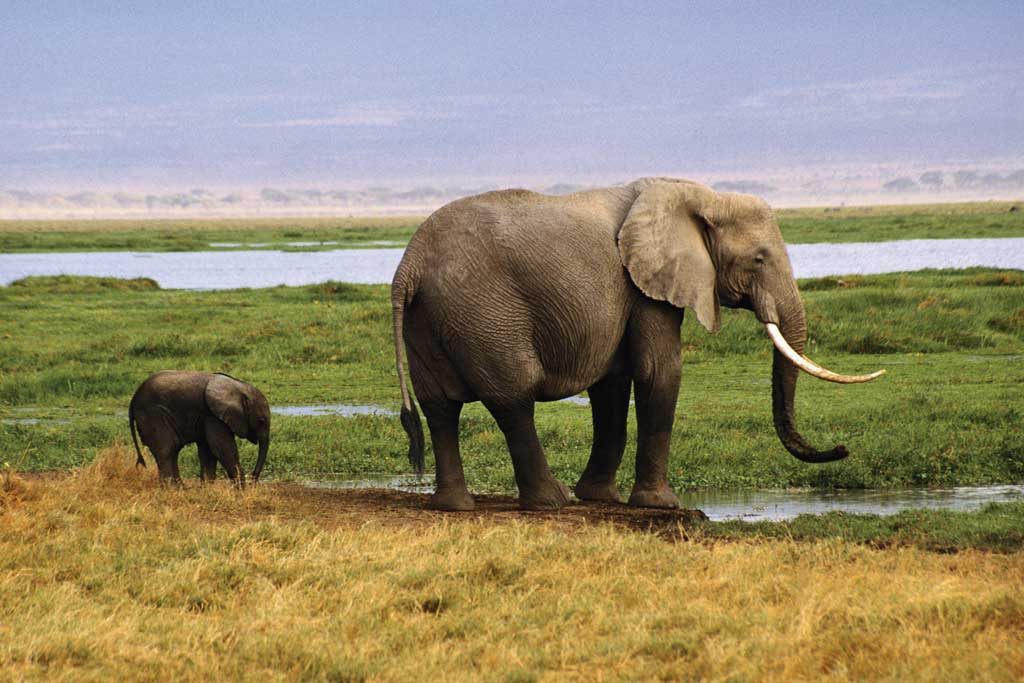
Elephant: a living thing made of many cells
As you can see, diatom algae and elephants are very different, so we divide living things into two categories:
- Unicellular: an organism consisting of a single cell, such as bacteria, fungi and algae.
- Multicellular: an organism consisting of more than one cell. All plants and animals are multicellular living things.
THE DISCOVERY OF CELLS: CELL THEORY
In 1665, the English scientist Robert Hooke first described a cell. He observed it using a rudimentary microscope which he had built himself. He observed a polygonal structure that was replicated multiple times inside thin sheets of cork. Hooke called this structure cella which means cell’ or gap’ in Latin.
In 1838, Matthias Schleiden and Theodor Schwann were the first scientists to formulate cell theory. This theory was later extended by other scientists, and nowadays it states that:
- All organisms are made of cells.
- Cells are the structural and functional units of living things.
- Every cell is the result of the division of a pre-existing cell.
- Cells are the simplest independent life units which we know of.
CELL STRUCTURE
Bacteria, skin cells and plant cells all have a basic structure, just like all cells found in nature. A cell consists of a plasma membrane, cytoplasm and at least one nucleic acid molecule.
- The plasma membrane is the envelope around the cell. It separates the inside of the cell from the exterior. It allows substances to enter and exit the cell. In addition to this membrane, some cells have another rigid outer casing which is called the cell wall.
- Cytoplasm is a watery substance found in the interiors of cells. In some cells, we can find organelles, which are specialised structures that perform specific functions. For example, a mitochondrion performs cellular respiration.
- The nucleic acid contains genetic information which is essential for the functioning of the cell. It can be dispersed within the cytoplasm, or surrounded by a membrane, which is called the nuclear membrane.
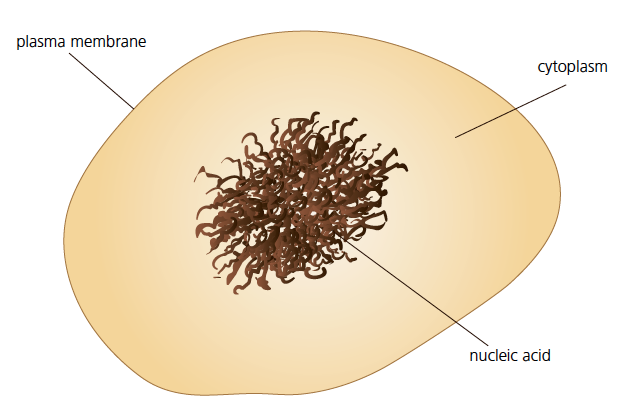
Cell size
Cells exist in different sizes, although generally they are microscopic. To measure cells we use micrometres (µm):
1 µm = 0.001 mm = 0.000001 m
1m = 1000 mm = 1000000 µm
CELL TYPES
Different species of living things have different amounts of cells as well as different cell structures. We can classify cells into two types according to their structures: prokaryotes and eukaryotes. Eukaryote cells differ according to whether they are found in animals or plants.
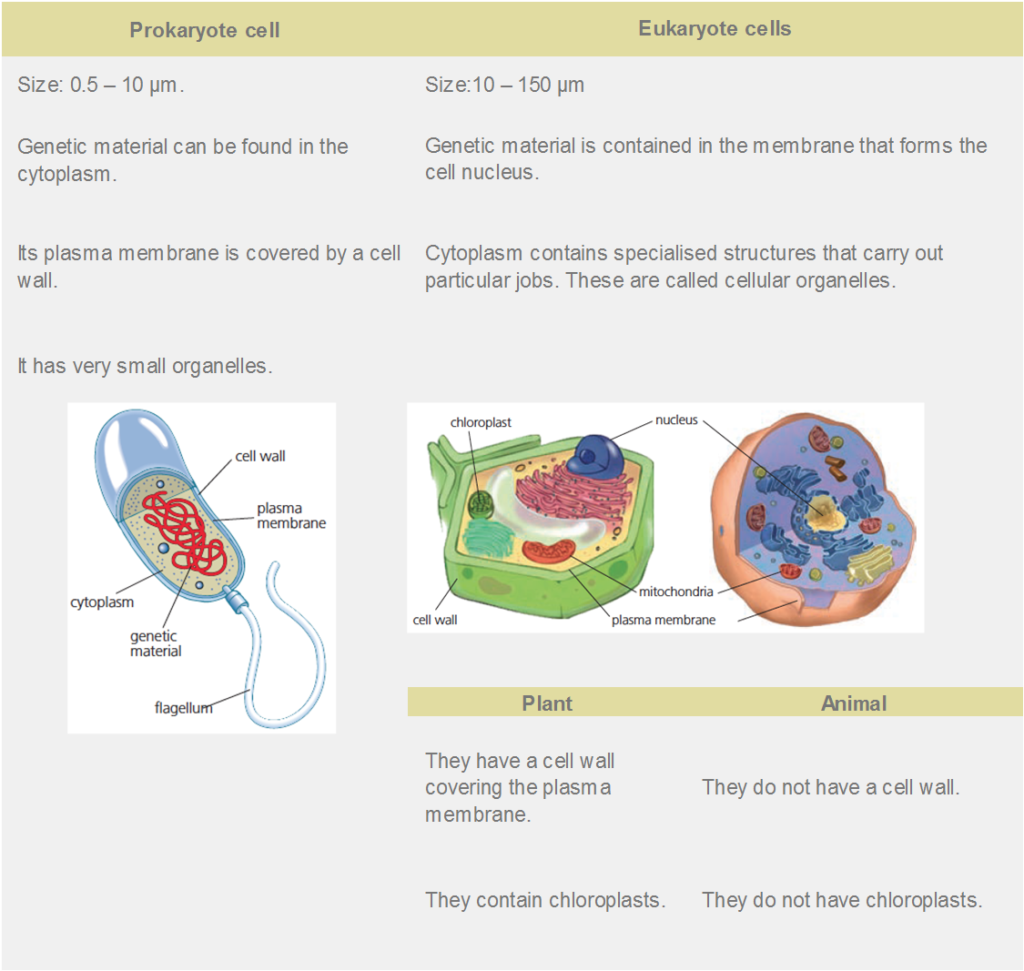
THE ENDOSYMBIOTIC THEORY
This theory was formulated by Lynn Margulis in 1967. It states that eukaryote cells originated from the interaction of several primitive prokaryote cells 500 million years ago.
Margulis proved that mitochondria and chloroplasts originated from primitive bacteria. Her theory is widely accepted by the scientific community.
CELL SPECIALISATION
Multicellular living things are made up of many cells. All cells in living things have a common characteristic: they have the same genetic material (DNA).
However, within the same organism, we can find many different types of cell. Each of them is specialised to perform a particular job.
Every type of cell uses one part of the information found in the DNA, as if the cell was reading a chapter of an instruction manual. This is known as cell specialisation.
Cell specialisation gives multicellular living things many advantages:
- Division of labour: Each type of cell performs a different job so living things can multitask.
- Greater efficiency: Because they do specific jobs, they do them very efficiently.
- Longevity: Damaged cells can be replaced by other cells. This means that multicellular organisms are more likely to survive.
However, multicellular living things need more energy to allow the different structures and functions to work at the same time.
Actividades
2. BIOELEMENTS AND BIOMOLECULES
Living things, like all matter in the universe, are made up of very small particles called atoms. These particles are so small you would not be able to see them, even if you used a microscope.
Atoms are the first structural level of matter and they organise themselves into molecules.
We know 117 different types of atom. Each of them constitutes a chemical element. A chemical element is a form of matter composed of atoms of the same type.
BIOELEMENTS
Bioelements are the units which living things are composed of.
The atoms that make up all living things mostly consist of six different chemical elements: carbon (C), oxygen (O) hydrogen (H), nitrogen (N), phosphorus (P) and sulphur (S). These elements constitute more than 99% of the matter found in living things. They are called primary bioelements.
Carbon atoms have the ability to link to other atoms. This allows life to take place and is why carbon is the most important bioelement.
Other chemical elements are found in living things; however, they appear in smaller quantities. We refer to them as secondary bioelements. They are: calcium (Ca), sodium (Na), magnesium (Mg) and potassium (K).
Lastly, trace elements are elements which are found in living things, but only in small amounts (0.1%). Although trace elements are not common, they are also important for certain functions. Examples of these are: iron (Fe) and iodine (I).
BIOMOLECULES
Bioelements join together to form different biomolecules. Biomolecules are what living things are made of.
Some biomolecules are exclusive to living things. They are known as organic biomolecules. These are: carbohydrates, lipids, proteins and nucleic acids.
Inorganic biomolecules (water or mineral salts) are also found in both living things and non-living things.
Water is essential for the existence of life and is the most common biomolecule. Between 50% and 95% of the weight of any living thing is water.
Percentage of water content of some living things
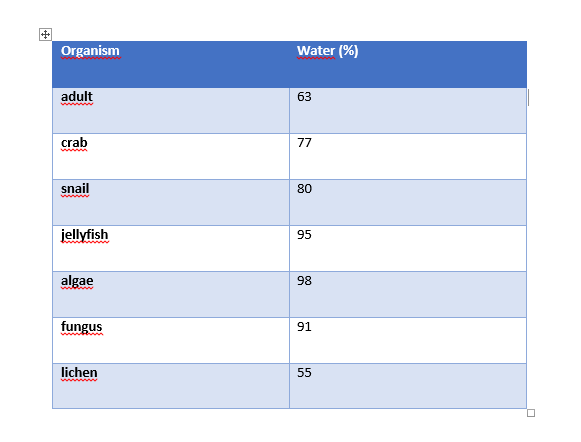
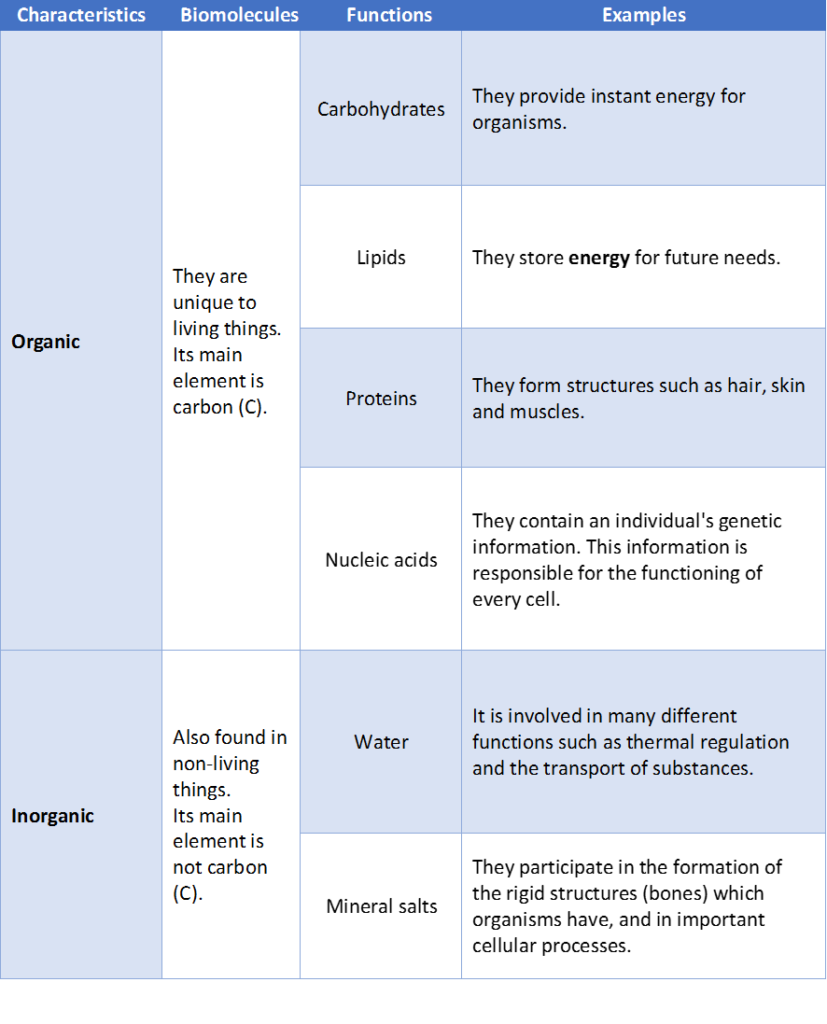
Actividades
Comentarios recientes